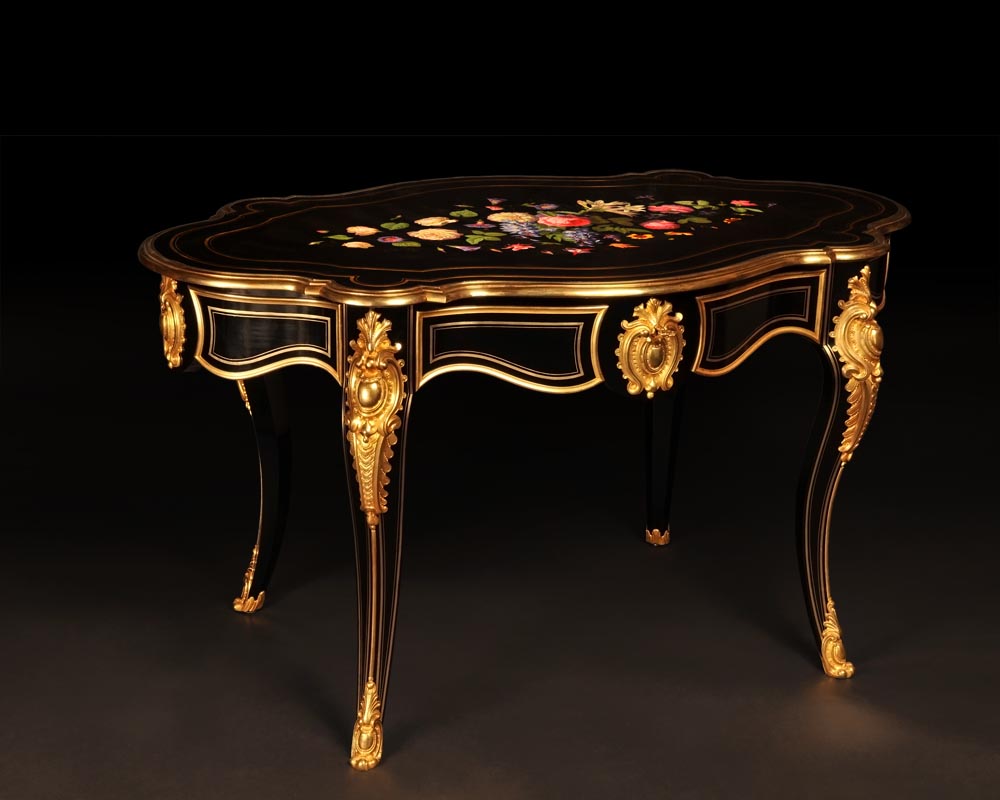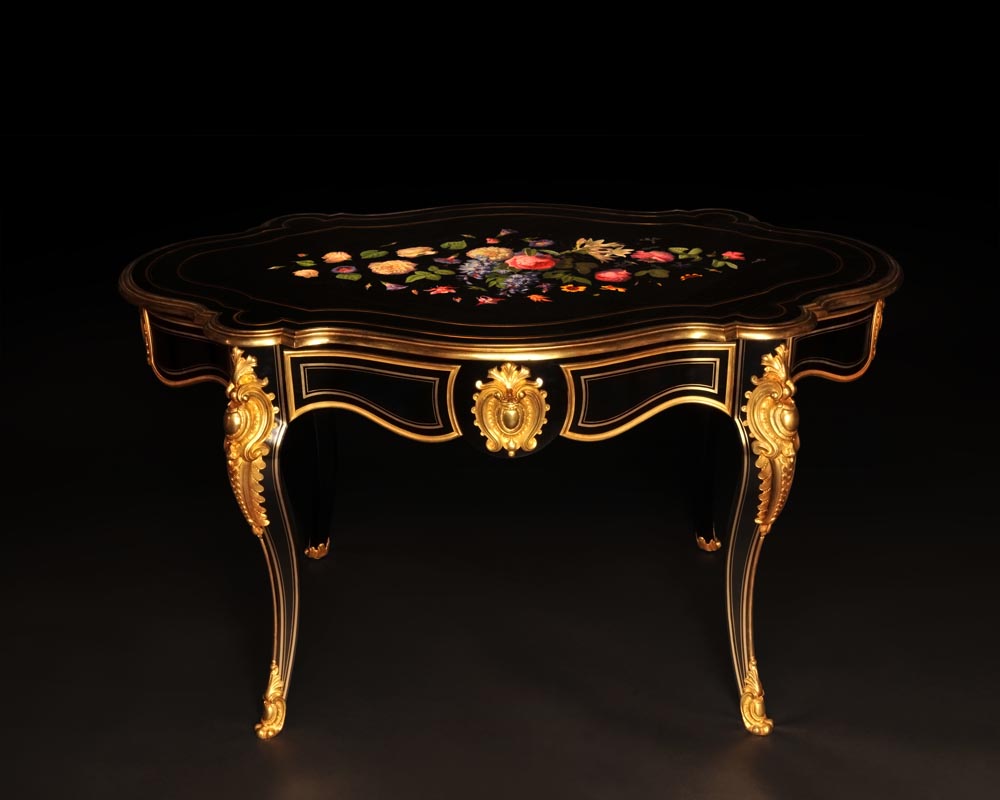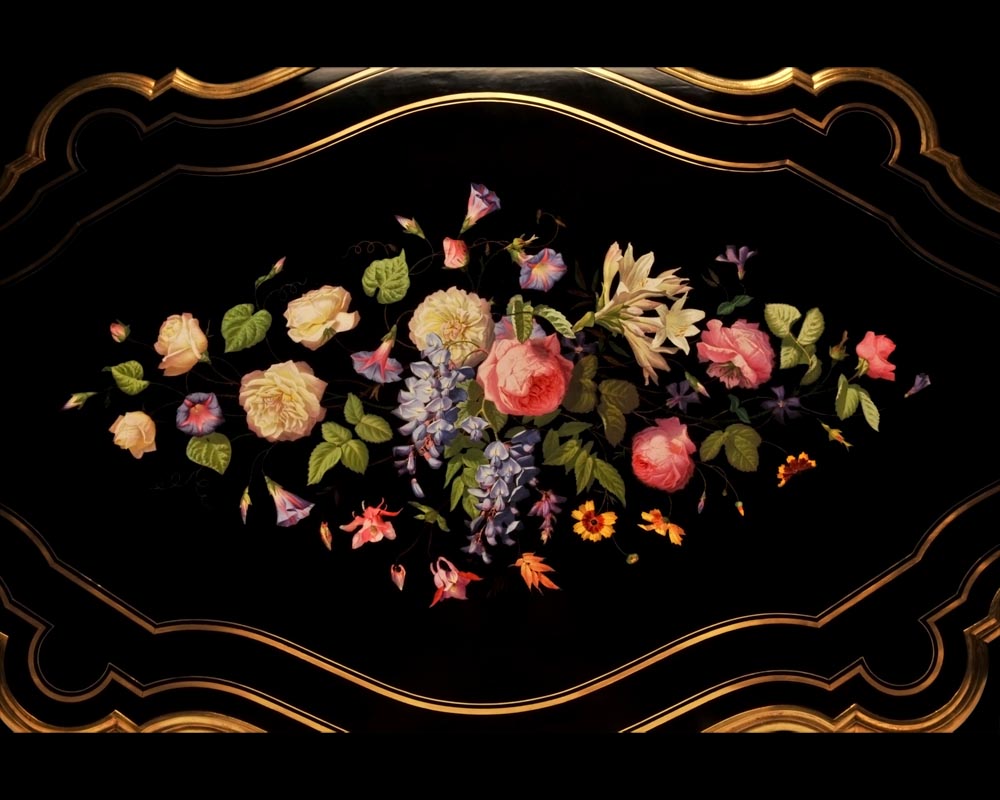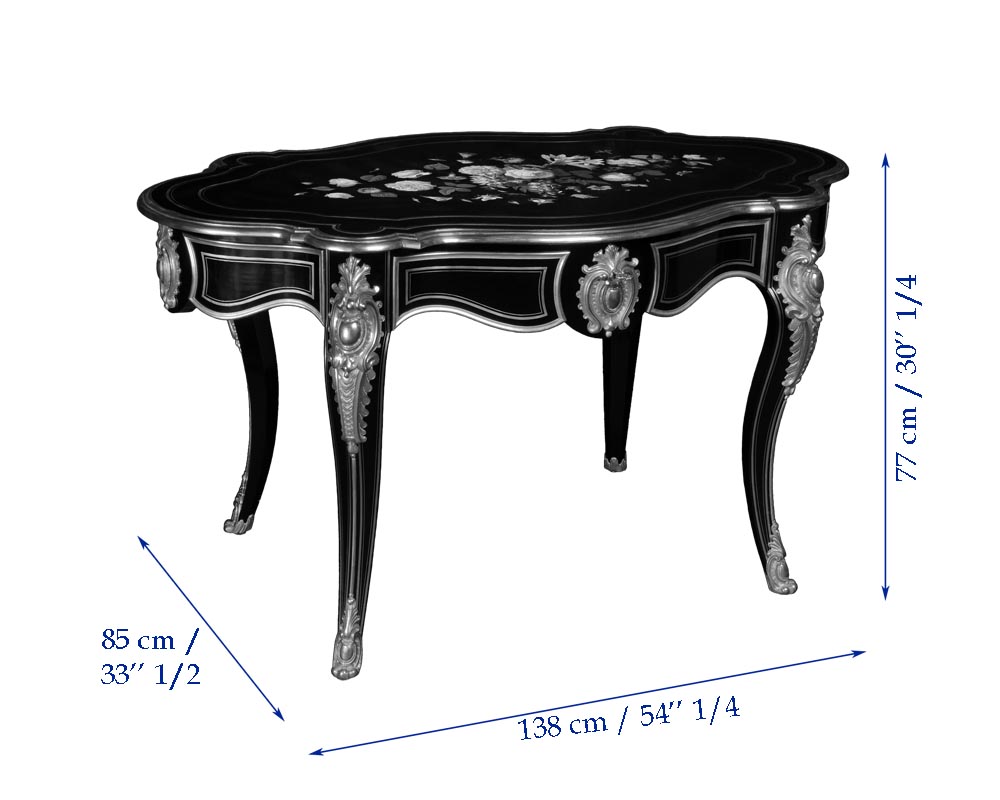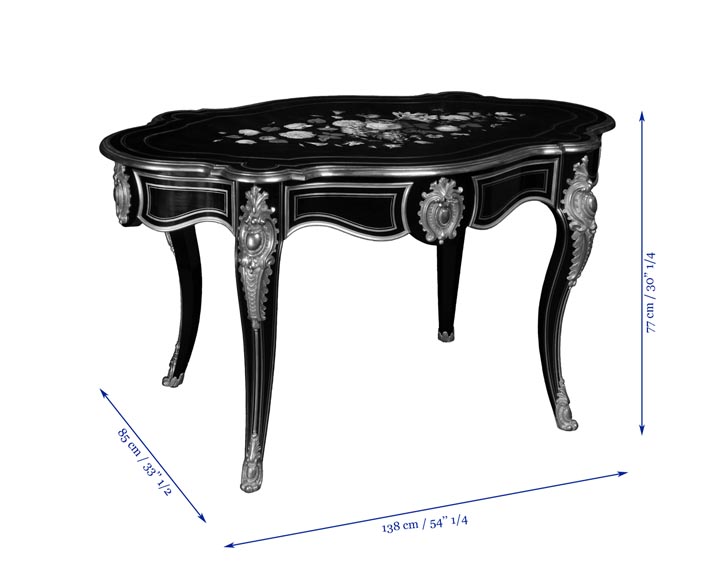Style Napoleon III / Ref.17313
Julien-Nicolas RIVART (1802-1867) - Louis XV style table in ebonized pear wood inlaid with porcelain marquetry
Dimensions
Width 54'' ⅜ 138cm
Height 30'' ¼ 77cm
Depth: 33'' ½ 85cm
Origin:
Between 1850 and 1867.
Status:
Pear wood, copper, gilt-bronze, porcelain marquetry. In very good condition.
Masterpieces of Marquetry in the 19th century. Patents. Rivart, Cremer, Fourdinois, Kayser Sohn et Duvinage, Marc Maison et Emmanuelle Arnauld, Ed. Faton, 2012, p. 35.
This superb violin-shaped table in the Louis XV style was decorated with porcelain marquetry by Julien-Nicolas Rivart . The depth of the black color of the wood is heightened by the precious quality of the colors used in the center of the top: a bouquet containing a great variety of flowers (coreopsis, oleander, convolvulus, roses, etc.) was realized in painted porcelain marquetry according to the process invented by Rivart . The artist was especially attentive to the rendering of each flower that was delicately designed without repetition, accentuating the great naturalism of the composition and giving the impression of a real bouquet of flowers set upon the table. The inlay of the porcelain pieces, notably for the leaves, is directly inspired by Florentine hardstone marquetry and this technique heightens the realistic aspect of the motifs while creating a striking contrast between the different shades of light and dark.
Rivart made several tables decorated using porcelain marquetry and this piece owes its great originality to the motif of a bouquet placed on the center of a table that is large in size. This piece differs from other tables by Rivart where garlands of flowers run along the top, as on the one made for the Count of Manneville, kept at the Cité de la Céramique de Sèvres.
The artist who painted the porcelain flowers for this table did not sign them. However, it is possible to attribute the work to Pierre-Joseph Guérou , a painter who worked at the Sèvres porcelain factory and whose signature appears on several pieces of furniture by Rivart , such as the jewel cabinet at the Château de Compiègne. As he specialized in painted porcelain plaques, he participated several times in the salons between 1836 and 1865. The treatment of the flowers, in fading tones, seems characteristic of Guérou's painting and attests to the complete mastery of the artist.
Inspired by the porcelain plaques fashionable in the 18th century, as well as by Florentine hardstone mosaics, Julien-Nicolas Rivart understood how to develop an innovative technique that totally revitalized the use of porcelain by inlaying it as true marquetry, where each element is independent. Rivart 's porcelain marquetry won awards several times at international exhibitions and this process was particularly praised by critics – French as well as English. Rivart's technique, considered "one of the most important innovations for the decoration of furniture" was universally acclaimed for its charm. Rivart took out a patent on his invention in 1849, thus keeping the exclusivity on this process and producing limited quantities of exceptional pieces of furniture.
The beauty of materials, the delicacy of colors and a rare decorative concept are the factors that make this table an exceptional piece of furniture and bears witness to this virtuoso process that spreads over the surface of furniture "the magic that comes from a bouquet of kaolin" (Auguste Luchet, L'Art industriel à l'Exposition de 1867).
Informations
Price: on request
Recommended for you :
Dimensions:
Width: 171
Height: 77
Depth: 94
Dimensions:
Width: 140
Height: 79
Depth: 136
Dimensions:
Width: 85
Height: 82
Depth: 57
Dimensions:
Width: 230
Height: 262
Depth: 66
Dimensions:
Width: 191
Height: 293
Depth: 56
Dimensions:
Width: 72
Height: 76
Depth: 105
Dimensions:
Width: 126
Height: 74
Depth: 36
Dimensions:
Width: 122
Height: 76
Depth: 82
Dimensions:
Width: 159
Height: 80
Depth: 98
Dimensions:
Width: 163
Height: 182
Depth: 66



